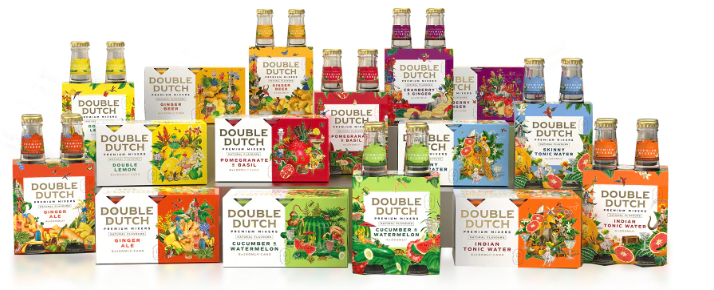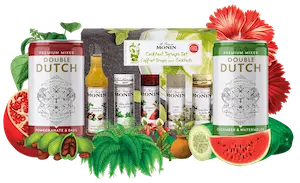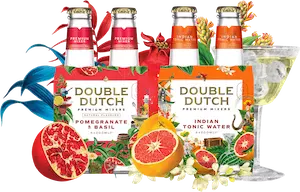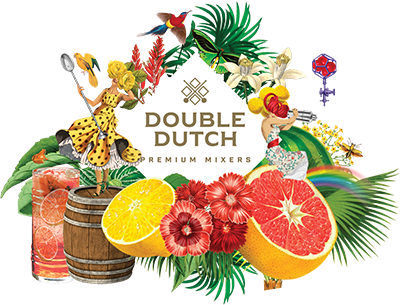Why & how is vodka made?
If you read anything on the history of vodka, you’ll know it’s not just one of the most popular spirits with a high alcohol content, but one of the most contentious - and we don’t mean that it makes you fight! Finland, Poland, Russia and Ukraine all claim to be the home-place of vodka.
We’ll never be able to prove which country first made this volatile spirit, but we can say that both Russia and Poland have an ancient tradition of making vodka … and here’s why.
Northeastern Europe is cold. Really cold. So while western Europe was enjoying beer - and the wine exported by the Roman Empire - the ‘Slavic’ countries found that both drinks froze and burst their barrels. Maybe as early as the 9th century, but definitely by the 12th, vodka was as much a medicine as a drink - used to disinfect wounds and as an anaesthetic.
It’s the distilling that produces a spirit that just won’t freeze, or at least not until it reaches -16 Fahrenheit, way below your average freezer. So at its earliest creation, it’s not so much how vodka is made, as why it was made. And that is because it needed to be a spirit that could cope with extreme weather conditions
A couple of centuries later, vodka was central to life in North and Eastern Europe. It’s no longer made from rye, but from potatoes, which are more commonplace and available to everybody, so home distilling becomes the norm.
The legend of the Monk Isidore
There’s something unique about Russia and monks with side-gigs! Famously there was Rasputin, who called himself a monk although he wasn’t, and his side-gig of hypnotising the Tsar’s haemophilic son and heir. And then there was Isidore - apparently a Greek Orthodox monk, who produced the first authentic Russian vodka while being detained in Chudov Monastery in Moscow around 1430. We have questions!
Sadly there are few answers. We don’t know if Isidore ever existed, we don’t know why he was an expert in distillation, nor why he chose to use wheat as his base material, and we definitely don’t know why he was being ‘detained’ in a monastery.
What we do know is that around this time a new form of vodka became the Imperial drink. Called ‘bread wine’ and distilled from wheat, this form of vodka gained popularity instantly and soon there was a state monopoly on vodka production.
Ivan the terrible - not so terrible for vodka lovers
There’s not much good to be said about Ivan the Terrible, but in 1533 he set up the first Kabak (a cross between a pub and a community hall) where people could buy wheat-based vodka. It wasn’t a rare moment of decency from Ivan, whose deteriorating mental health made him ever more despotic and dangerous - he did it for the money.
The first Kayak was followed by many others and within 20 years they’d spread throughout the country … and all the proceeds went back to the Imperial treasury.
So what made wheat-based vodka so special?
Vodka is what is called a neutral spirit and people claim that it’s both flavourless and colourless. While the last point is definitely true, it’s only because The United States’ law defines vodka as a colourless spirit - vodka comes in every shade from clear as spring water to black as an eclipse; there’s even a colour-changing flavoured vodka on the market!
Wheat became popular as it offered the most ‘pure’ vodka, the one least affected by trace flavours, and while today vodka is made from potatoes, grains or fruit, it’s still traditionally a grain based spirit.
It’s a simple recipe and a complicated method. Take two raw materials - ethanol made from fermenting something like cereal grains for example, and water. That’s it. Except, it’s not.
Fermentation
The fermentable ingredient: potatoes, wheat, corn rye, sorghum, cherries, apples etc is fermented by making a mash and adding water and specific yeasts. This is heated and stirred and then stored so that a simple alcohol called ethanol is produced. That’s just the first stage.
Distillation
The liquid is strained from the mash, heated and vaporised and then gathered as it re-condenses into a liquid. The more distillation vodka undergoes, the purer it is said to be. However, before the vodka is distilled, the distillers increasingly add flavours and botanicals to the distillation process. This can be done by steeping the botanical elements in the ethanol before distilling or botanicals can be injected into the distilling process itself.
Heads, hearts and tails
If we’re making vodka sound like a fish, don’t blame us! Distilling uses these terms to describe different stages of the distilled project:
- The first amount of distillate is called the heads - it’s volatile, has a lower boiling point and can be toxic. It may be disposed of, used in industrial cleaners or redistilled to produce more ethanol.
- The next is the hearts - the best part of the distillate, with balanced flavours and a high but not dangerous amount of ethanol.
- The final section is the tails - impure and higher in boiling point - propanol (used in antifreeze) and butanol emerge here, and they’re pretty unpleasant to drink! Like the heads, they can be redistilled to offer a little more ethanol.
Filtration
Some do, some don’t. Vodka is often filtered to make it smoother and cleaner in taste, but that’s not a universal part of the process and if you like a livelier vodka, you might want to look for an unfiltered brand.
So that’s the why and the how, the mysteries and the explanations - and after that we all deserve a drink! Moscow Mule anyone?









